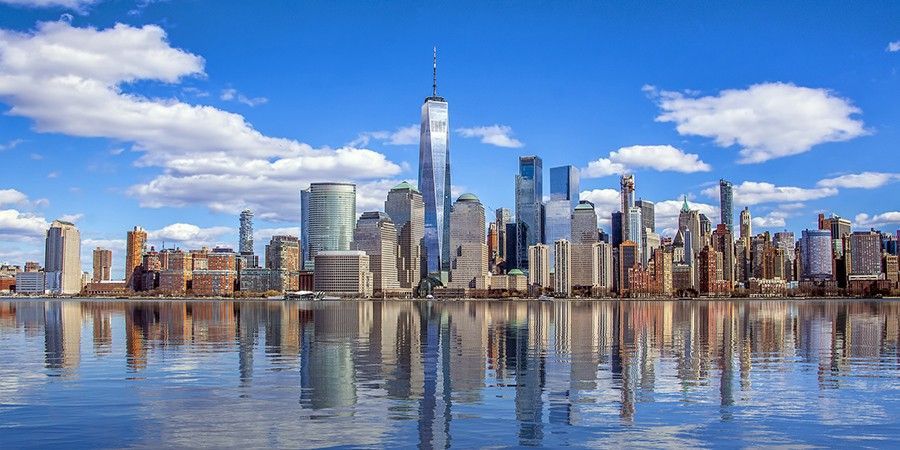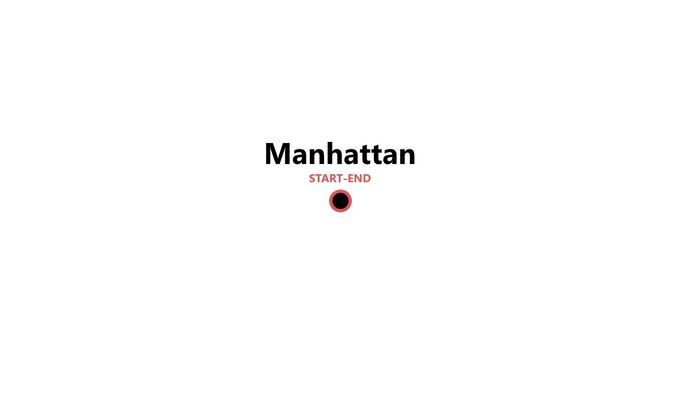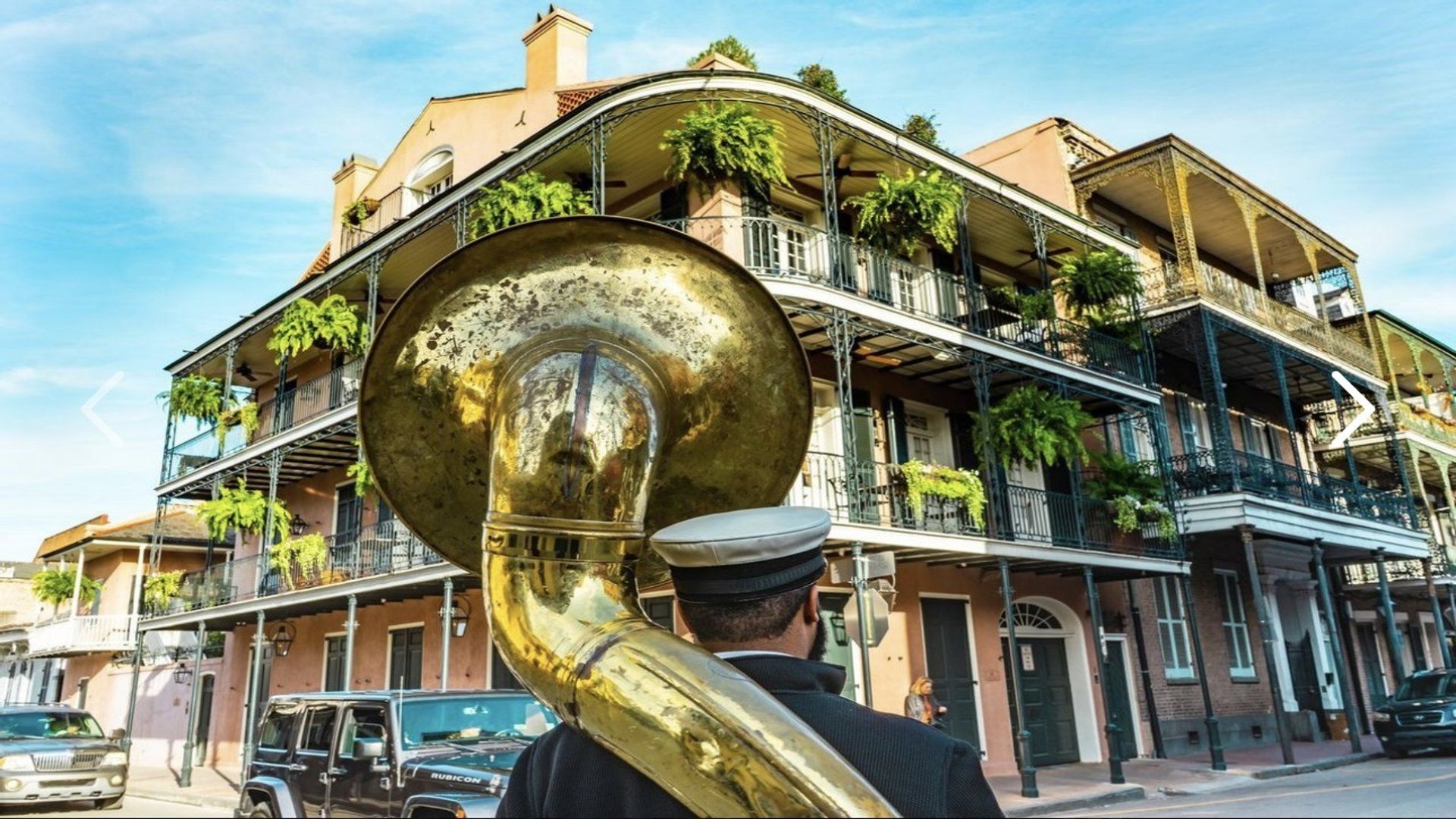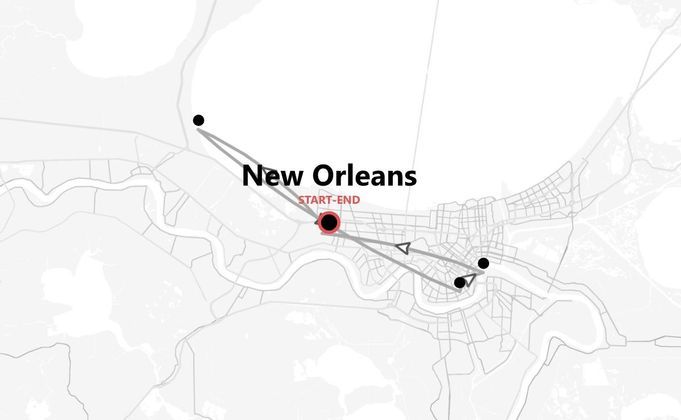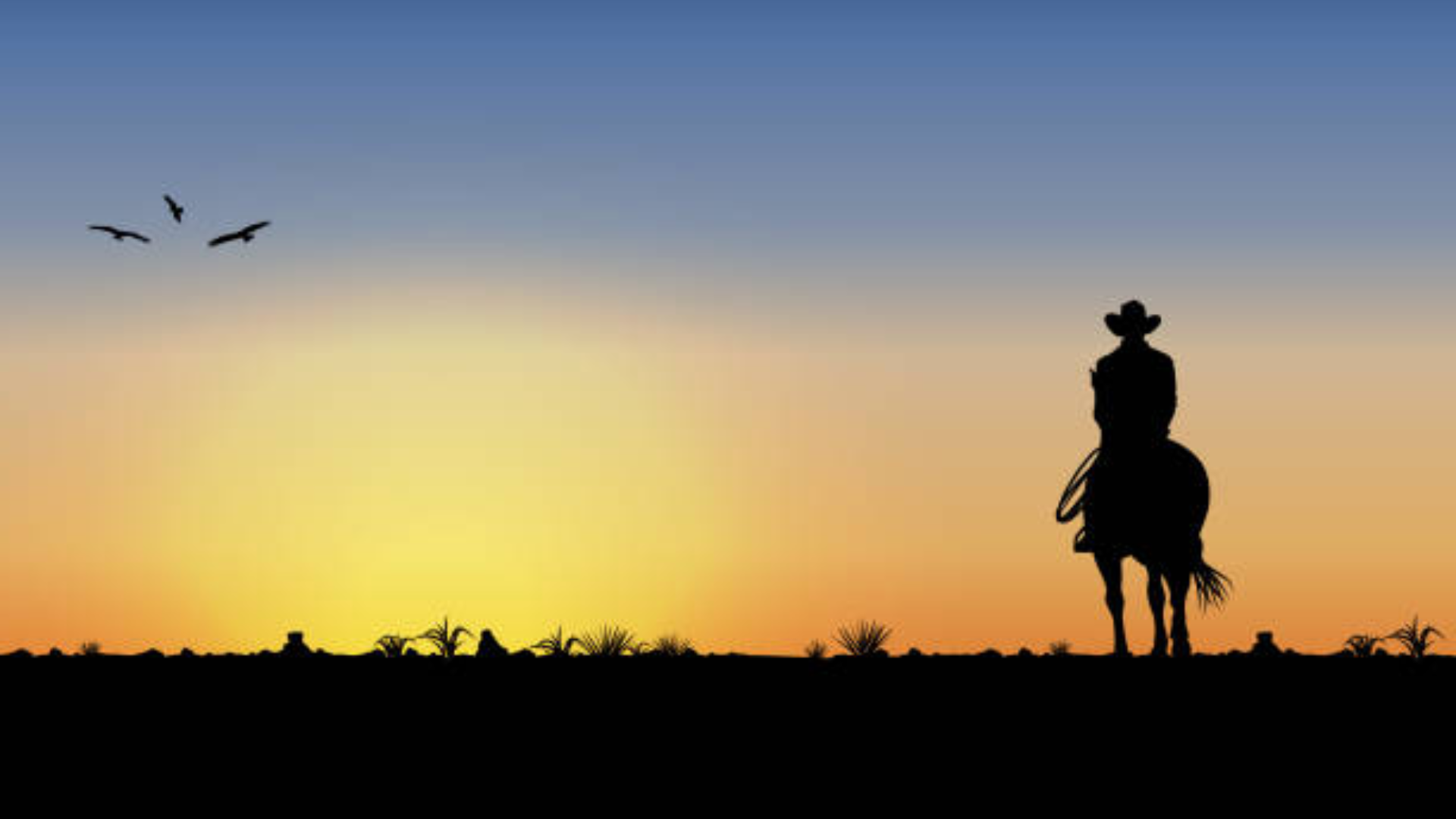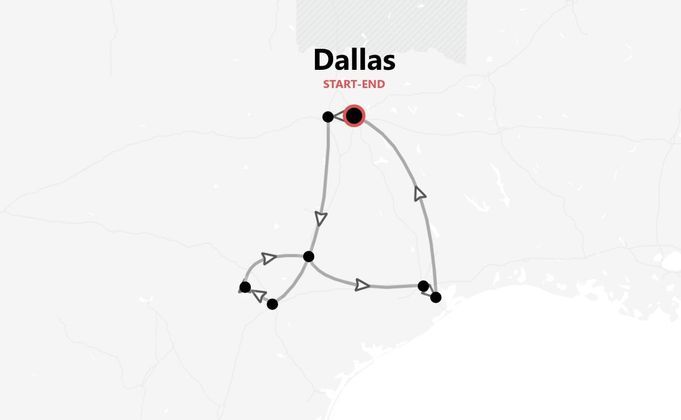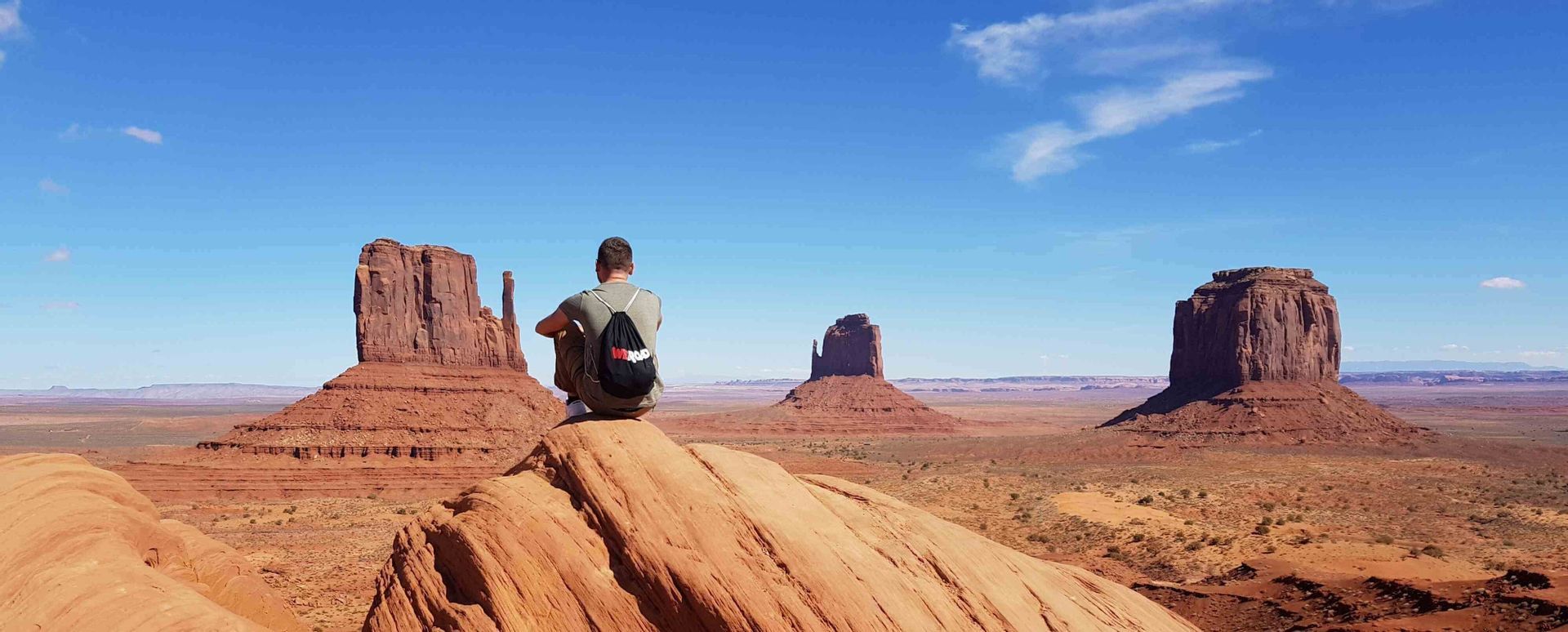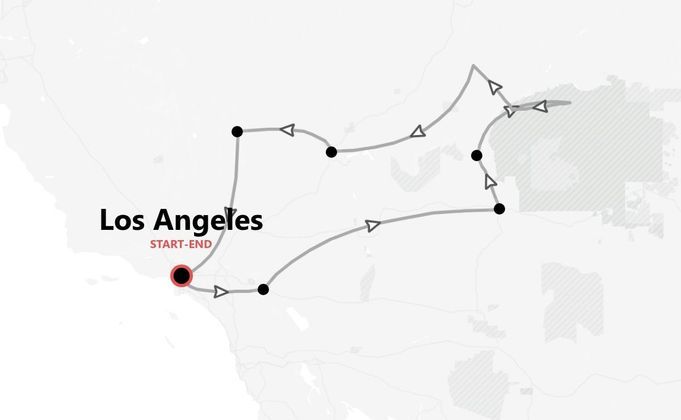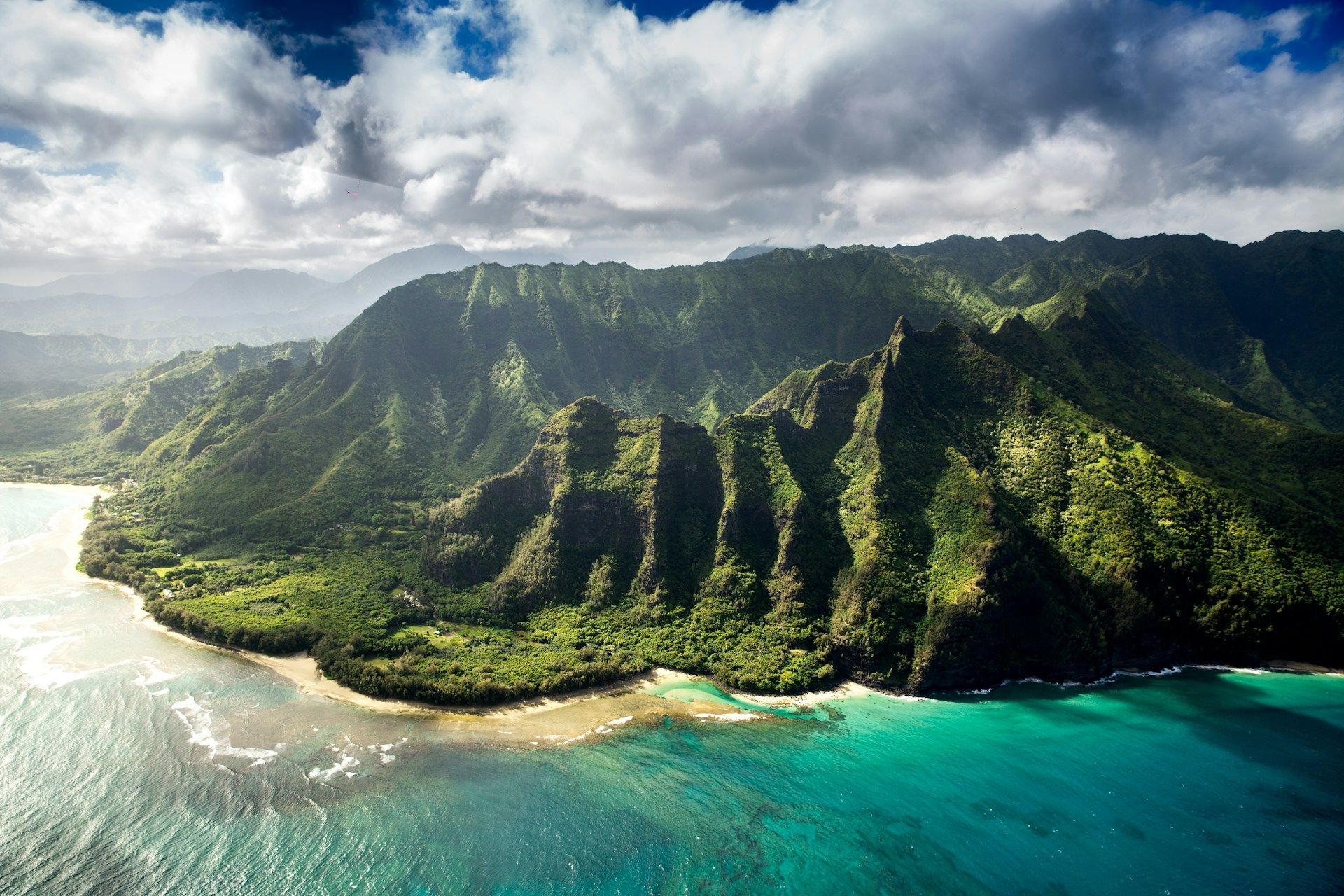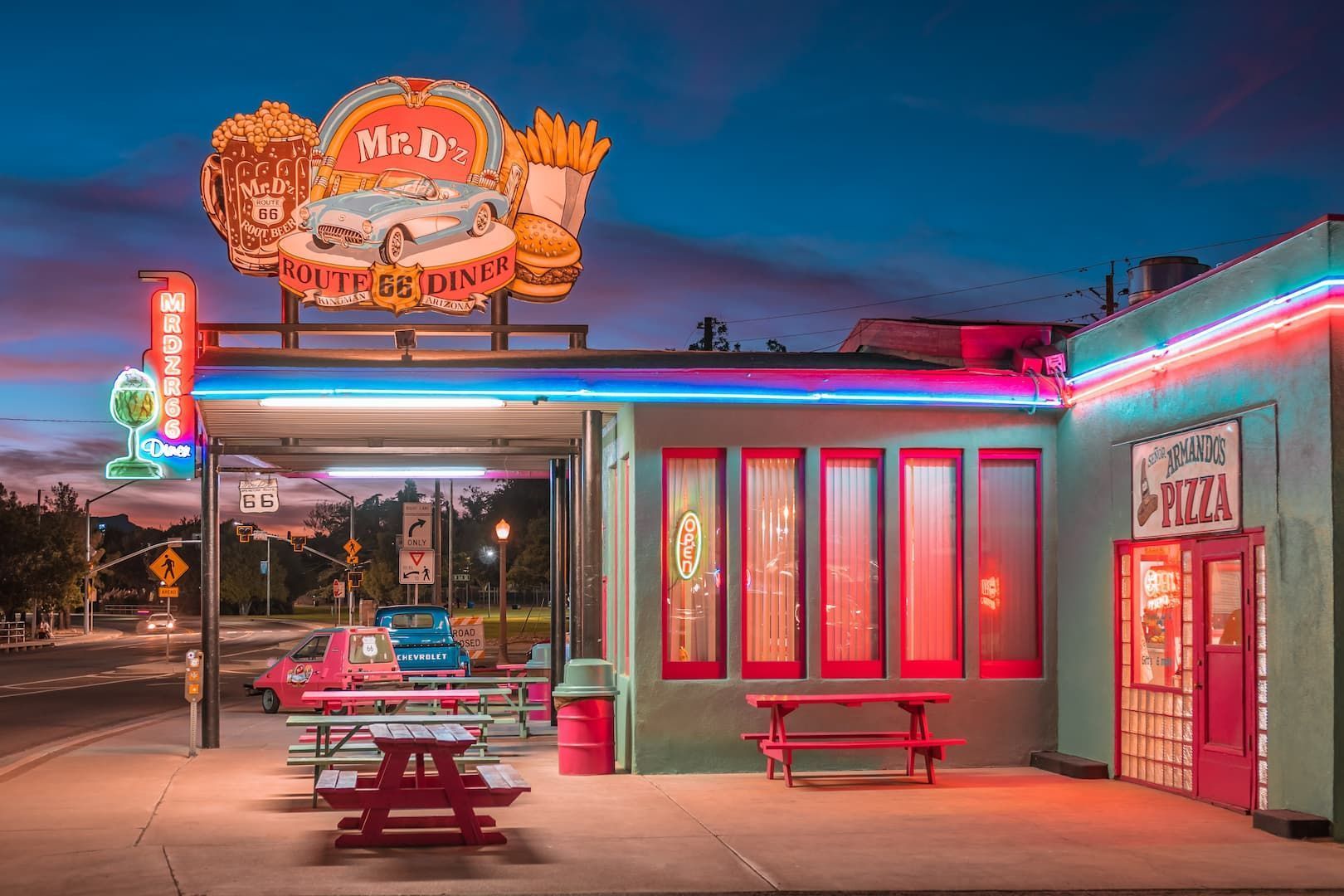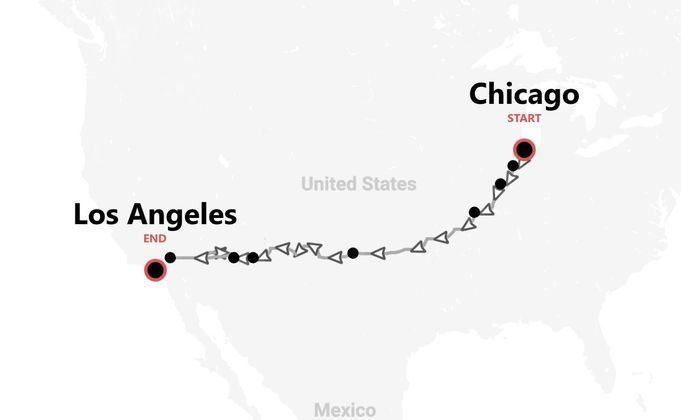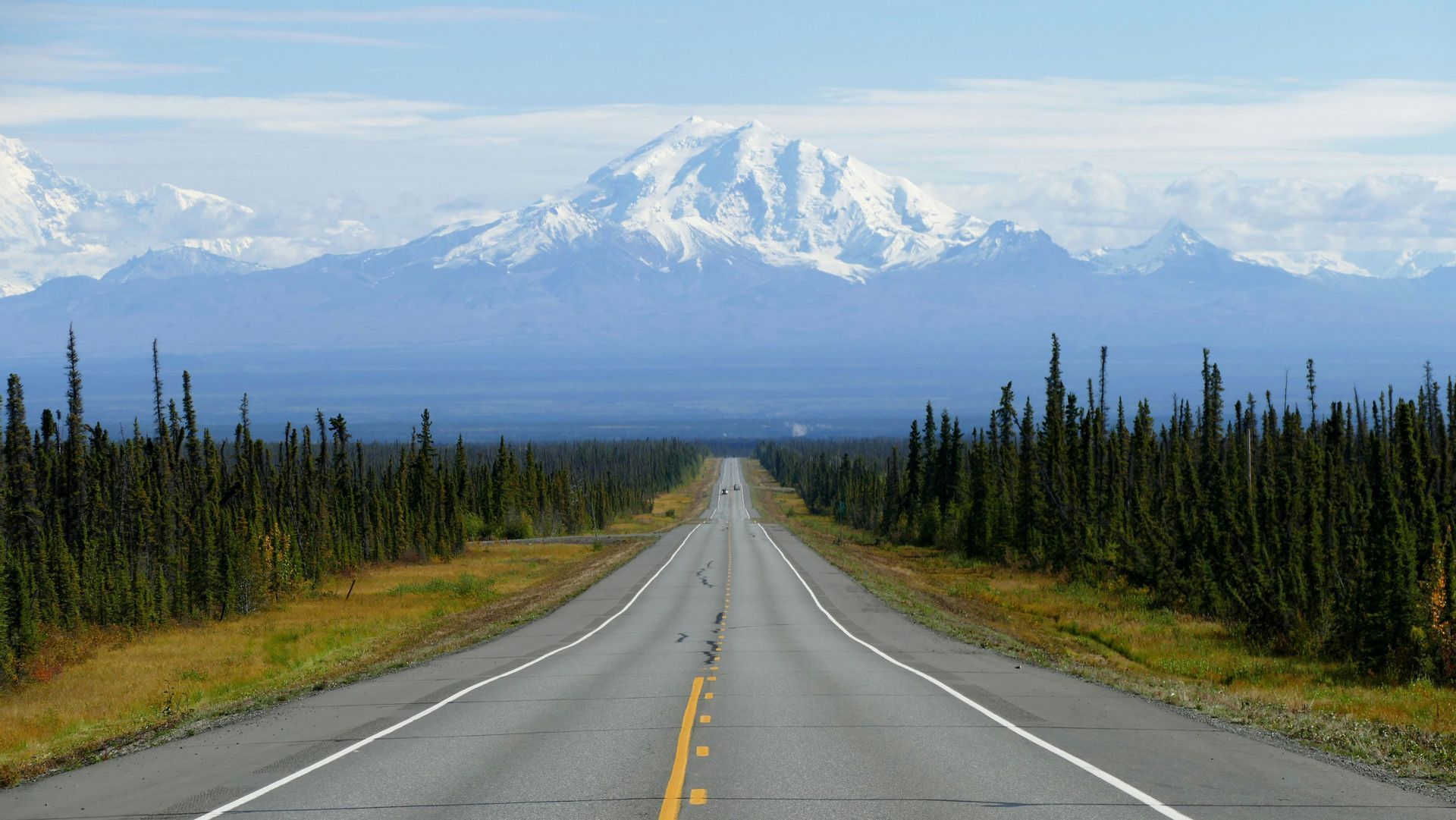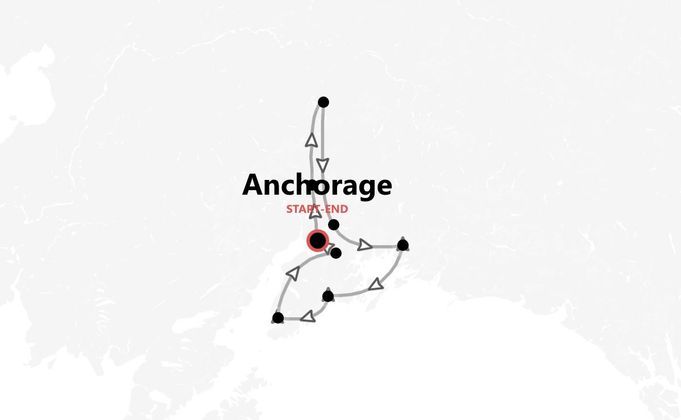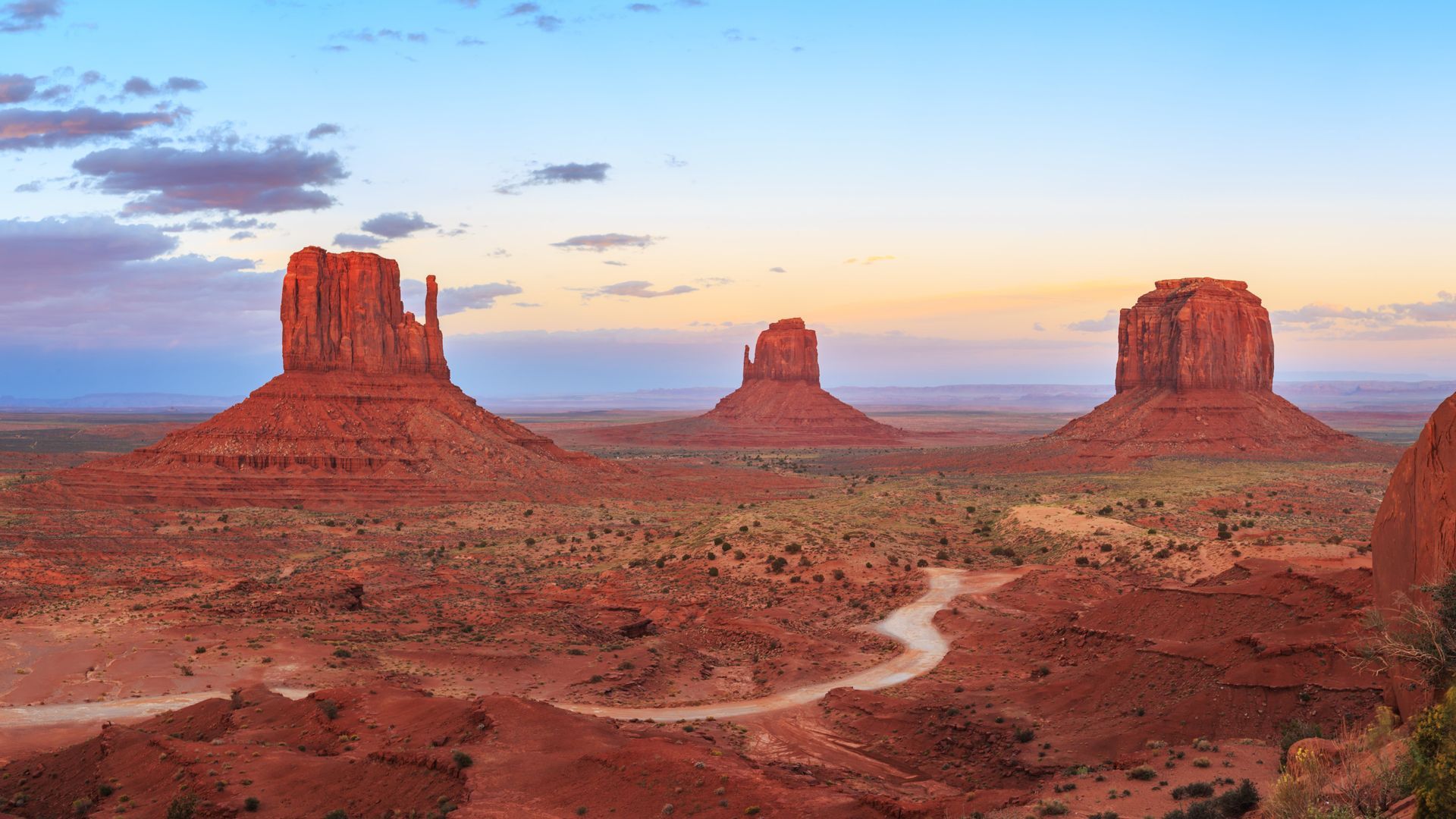
Group trips to the United States of America
Our organized trips to the USA
One trip is not enough to discover all the faces of the United States of America: 50 states covering a vast territory of nearly 10 million square kilometers, stretching from Alaska in the far north to Key West, the southernmost point of the U.S., from the Big Apple on the East Coast to Hawaii, the green pearls of the Pacific Ocean. The variety of landscapes is endless, as is the diversity of cultures, ethnicities, accents, religions, and traditions – after all, the United States witnessed one of the largest migrations of the last century, with millions of people from all over the world leaving their homeland to chase the great American dream. Today, it’s our turn: with our American itineraries, we want to explore all the facets of this "young" country – from sunny California to the cold, uninhabited Alaska, from Chicago to New Orleans along the music trail, from the bustling streets of New York to the Latin rhythm of Miami and the Keys islands. The hard part is choosing which itinerary to start with, then... just pack your bag!
FAQs about the USA
If you are a UK citizen, to find out the entry requirements for the United States of America, you can check this informational page from our partner Sherpa. If you need a visa, you can apply for it through Sherpa. If you are not a UK citizen, you can still use Sherpa by changing the nationality in the 'Passport' section.
Before traveling, always remember to check the government website of your country of origin for updates on the entry requirements for the United States of America – you wouldn’t want to stay home due to a bureaucratic detail!
- UK residents: review the FCDO Travel Advice.
- US residents: consult the US Department of State Travel Advice.
- Other residents: refer to your government or local consulate's travel advice.
Important! If you have visited certain specific countries - for example Cuba - you cannot apply for ESTA. Check for other visa rules.
The United States of America spans multiple time zones, so the time can vary depending on where you are. Here are the main time zones:
- Eastern Standard Time (EST): 5 hours behind the UK. If it's 12pm in the UK, it's 7am on the US East Coast.
- Central Standard Time (CST): 6 hours behind the UK. If it's 12pm in the UK, it's 6am in the US Central region.
- Mountain Standard Time (MST): 7 hours behind the UK. If it's 12pm in the UK, it's 5am in the US Mountain zone.
- Pacific Standard Time (PST): 8 hours behind the UK. If it's 12pm in the UK, it's 4am on the US West Coast.
Remember that the US observes daylight saving time, typically from the second Sunday in March to the first Sunday in November, which may alter these differences by one hour.
The currency used in the United States of America is the US Dollar (USD). As of recent rates:
- 1 British Pound (GBP) is approximately 1.21 USD
- 1 Euro (EUR) is about 1.05 USD
- 1 US Dollar (USD) equals 1 USD
You can exchange currency at airports, banks, and currency exchange centers throughout the country.
In the USA, you can pay using credit cards, debit cards, and mobile payment apps like Apple Pay and Google Pay. Cash is also widely accepted. Most places take major credit cards like Visa, MasterCard, and American Express, but it's a good idea to carry some cash for smaller businesses or tips. Always check if your card provider charges foreign transaction fees to avoid surprises.
Yes, tipping is customary in the United States and is an important part of the service industry. For restaurants, it’s standard to tip 15-20% of the total bill before tax. In bars, leaving around $1-2 per drink is common. For taxi drivers, hairdressers, and similar services, a tip of 10-15% is usual. Hotel staff, like bellhops, usually receive $1-2 per bag, and housekeeping staff generally get $2-5 per day. Tipping is how many service workers earn a significant portion of their income, so it's appreciated and expected.
In the United States, internet connectivity is generally reliable and widely available. However, if you want to stay connected while on the road, buying a local SIM card or an e-SIM data plan is a good idea. Providers like AT&T, T-Mobile, and Verizon offer various prepaid plans. If you're primarily staying in urban areas, you'll find free Wi-Fi in many places, such as cafes, restaurants, hotels, and public spaces. However, in rural areas, Wi-Fi might be less available, so having mobile data is handy.
In the United States, the primary language spoken is English. However, you'll find a rich tapestry of languages due to its diverse population. Here are some useful colloquial expressions you might hear or use:
- How's it going? - How are you?
- Awesome! - Great!
- No worries - It's okay, no problem
- Catch you later - See you later
- What's up? - What's happening?
These can help you get by and sound like a local during your visit!
In the United States, the plugs are Type A and Type B. The voltage is 120V, and the frequency is 60Hz. If you're coming from a country that uses different plugs, you'll need a universal adapter to charge your devices. Always check your device's voltage compatibility to avoid any damage.
The main religion in the United States is Christianity, with a majority of the population identifying as Christians. However, the U.S. is a melting pot of cultures and beliefs, so you will find a variety of other religions practiced here, such as Judaism, Islam, Buddhism, and Hinduism. The U.S. is known for its religious freedom, allowing people to practice their faith openly. There are no specific dressing requirements tied to religion in the U.S., and religious holidays are diverse, with Christmas and Easter being widely celebrated.
When packing for the United States, consider the vast climate differences across regions and seasons. Here's a handy list to help you pack your backpack:
-
Clothing:
- T-shirts, sweaters, and a light jacket
- Jeans and shorts
- Swimwear if visiting coastal areas or warm regions
- A warm coat and gloves if traveling in winter to northern areas
-
Shoes:
- Comfortable walking shoes
- Sandals for warm weather
- Boots if visiting snowy or rugged areas
-
Accessories and Technology:
- Sunglasses and a hat
- Universal travel adapter
- Power bank for your devices
- Camera or smartphone for capturing memories
-
Toiletries and Medication:
- Travel-sized shampoo and conditioner
- Toothbrush and toothpaste
- Sunscreen and insect repellent
- Basic medications like pain relievers and motion sickness tablets
Be sure to check the specific weather for the region you're visiting to pack accordingly.
The weather in the United States varies greatly depending on the region and the time of year:
- Northeast (e.g., New York, Boston): Cold winters with snow, warm and humid summers. Best time to visit is spring or fall.
- Southeast (e.g., Florida, Georgia): Mild winters, hot and humid summers with frequent rain. Best time to visit is winter or early spring.
- Midwest (e.g., Chicago, Detroit): Cold and snowy winters, hot summers. Spring and fall are pleasant for visiting.
- Southwest (e.g., Arizona, New Mexico): Mild winters, extremely hot and dry summers. Fall and spring are ideal for travel.
- West Coast (e.g., California, Oregon): Mild and wet winters, dry and warm summers. Best time to visit is late spring to early fall.
Always check local forecasts before your trip as weather can be unpredictable.
